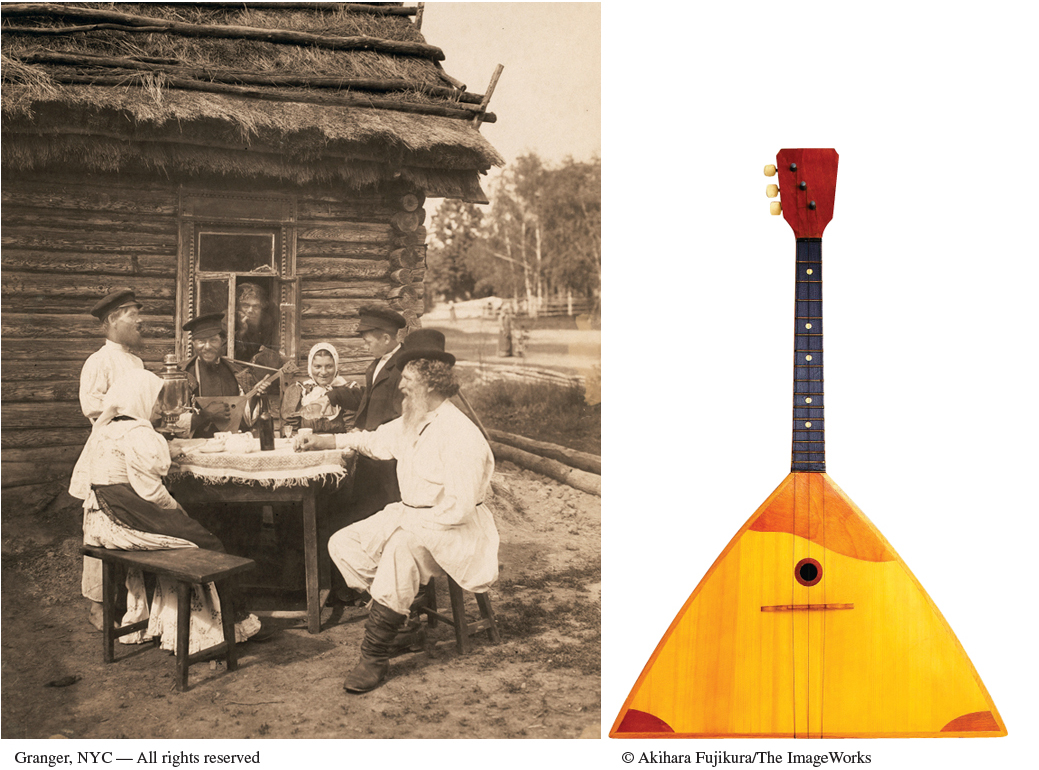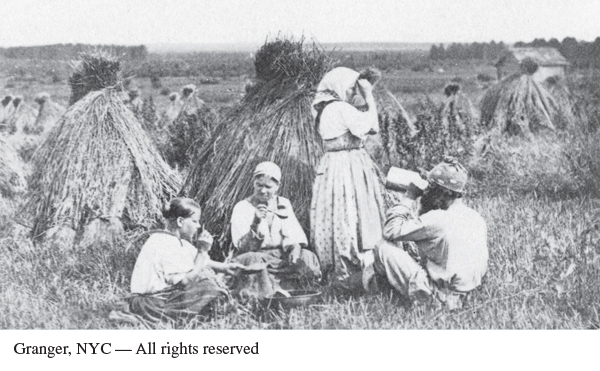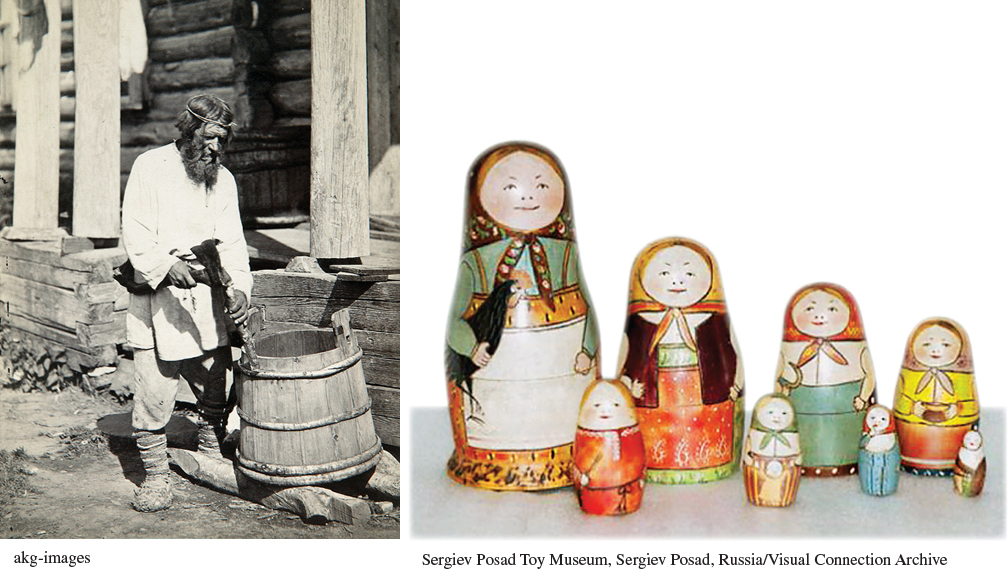A History of Western Society: Printed Page 768
Chapter Chronology
Living in the Past
Page 768
Peasant Life in Post-Reform Russia
T he cautious emancipation of 1861, which freed Russian peasants from their noble lords but tied them to their villages, preserved traditional peasant life until the massive industrial surge of the 1890s. Most peasant families continued to live in one- or two-story log cabins strung out along the village’s wide dirt road. A cabin typically had a single living room, a storage room (sometimes shared with animals), and a shallow cellar. Simple furniture — a table, benches, storage shelves — was complemented by a large, flat brick oven that was used both for cooking and as a surface for sleeping. On Sundays villagers attended a long Orthodox service in their wooden church, often followed in summer by socializing with family and friends, drinking tea and mild homemade ale, telling stories, and playing the traditional stringed instrument, the balalaika.

In this photograph (ca. 1875), members of a Russian family gather outside a typical peasant cabin to enjoy a Sunday break from their labors. The man at the rear is playing a song on a balalaika (above right), a three-stringed Russian folk instrument similar to a guitar.
© Akihara Fujikura/The ImageWorks
In contrast to western Europe, where women had almost never done heavy field work, Russian peasant women always took part in the hard work of plowing, planting, and harvesting. Infertile soil, sparse population, simple hand tools, and short growing seasons demanded intense physical effort from all family members to get the crops planted and harvested before the first hard freeze and the long, brutal winter. Since peasant land, after emancipation, was owned by the entire village, with each family allotted its share of the long strips of land according to its size, fields had no fences marking off private property, which did not exist.
Russian peasants typically needed additional nonagricultural income to supplement the wages they made growing crops. Thus both men and women engaged in many crafts and trades, of which weaving, pottery, embroidery, hauling, logging, and carpentry were particularly important. Woodworkers, like this peasant barrel maker with his birch-bark shoes and homemade leggings (below left), used an abundant raw material to fashion elaborate dolls and attractive wooden tableware as well as workaday items. Peasants also went to towns and cities for temporary work, and many settled there permanently as industrial workers in the 1890s.
Page 769

Russian agriculture depended on the contribution of women and girls, as this photograph attests.
(Granger, NYC — All rights reserved)

This 1895 photo of a barrel maker and the image of the antique wooden nesting dolls highlight the importance of woodworking as a source of secondary income for Russian peasants.
nesting dolls: Sergiev Posad Toy Museum, Sergiev Posad, Russia/Visual Connection Archive
- How did the abolition of serfdom affect peasant life in Russia?
- What role did peasant women play in Russian agriculture? Why?
- How did Russian peasants interact with their environment? In what ways did their environment influence peasants’ lives?


